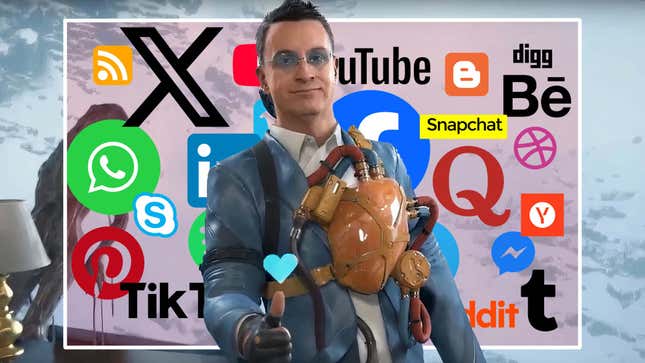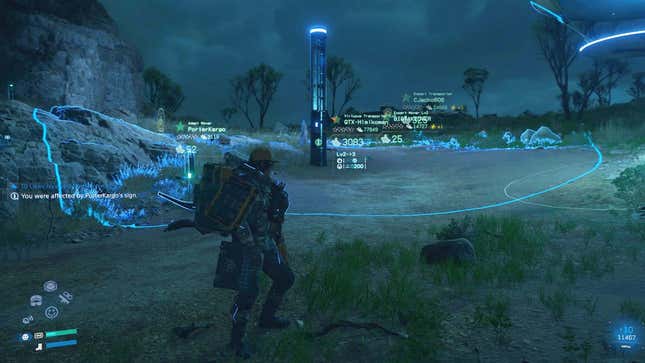
One night, I pushed too far and took too many risks while playing Death Stranding 2. I was in the middle of an area infested with deadly BTs, aka evil tar ghosts who can kill you. I was running low on battery, meaning my exosuit would stop functioning and all my cargo would suddenly become too much for me to carry. I was properly screwed.
But then, after carefully trekking across one last hill, I spotted a small, glowing shelter not far from my location. I quickly made my way to it and was able to charge my battery, catch my breath, and protect myself for a bit from nearby BTs. As I arrived at this wonderful bit of hope that was created by another player, I smashed the PS5's touchpad, leaving hundreds of likes for the shelter’s creator in the space of a few seconds. And sometime later, they got a notification that a structure they built had helped someone and received some likes.
I know this because it happened to me many times while playing Death Stranding 2, which is both a video game from Hideo Kojima and the world’s first totally good and not bad social network.
The Likes Economy Of Death Stranding 2
Death Stranding 2: On The Beach launched last month to mostly positive reviews. I personally enjoyed this very strange open-world post-apocalyptic cargo delivery simulator starring Norman Reedus, even if I found the ending not very satisfying. But while Death Stranding 2 is a game obsessed with delivering packages, connecting in-game NPCs to a larger network, and saving the world, it is also a strange multiplayer experience.
To be clear: You never meet other players directly while playing, but you can see what they build, interact with their creations, and even leave behind holographic signs, structures, and supplies. And all of this—including the mushrooms that grow from the ground when players all pee in the same spot—can be “liked” in-game as if they are pieces of content on your phone’s timeline.
This is a big part of Death Stranding 2 that you can technically ignore. But good luck doing that. There is something deeply satisfying and rewarding about building a shelter or a funny sign and getting hundreds of likes for your effort. It creates this “Likes economy” where players work hard to “go viral.” However, to go viral in Death Stranding 2 means you have done something super helpful.
Unlike actual social media networks like Facebook or TikTok, the only way to go viral and get thousands of likes is by being a good, helpful person. If you place a ladder against a cliff and it leads to nothing, it’s likely that nobody will use it or like it. It will be buried under better, more helpful creations. And you can’t even dislike anything, either. You just have to ignore it.
Helpful Spam And No Racism
This “likes economy” does lead to many of Death Stranding 2's hubs and in-game shelters being surrounded by what amounts to spam. If you’ve played for even a few hours, you’ve likely experienced this when driving into a delivery centre and encountering the dozens of holographic signs that dot the pathway. Or you see that people have left guns, ammo, or healing items outside doorways, cluttering up the space in their efforts to win some likes.

But while this spam is sometimes a bit annoying, it never feels mean spirited or shitty. It’s just a lot of people trying to be helpful all at once in one singular location.
Compare that to the shit you likely see every single day on social media in the real world, and it’s clear which is better. And as a bonus, Death Stranding 2 doesn’t let you leave text notes or voice messages in the world. No racist garbage or awful slurs are sprinkled around. It’s just people working together to make the world of Death Stranding 2 a better, easier place. It’s a social network that rewards kindness, empathy, care, and hope. And in 2025, we all need more of that.
I’m not foolish enough to believe Death Stranding 2's social network-like features will replace Twitter or Facebook. Nor do I think it will change the world. But it does provide something I thought impossible: A social network that doesn’t make me angry and sad every time I use it. And that’s something, at least.
.